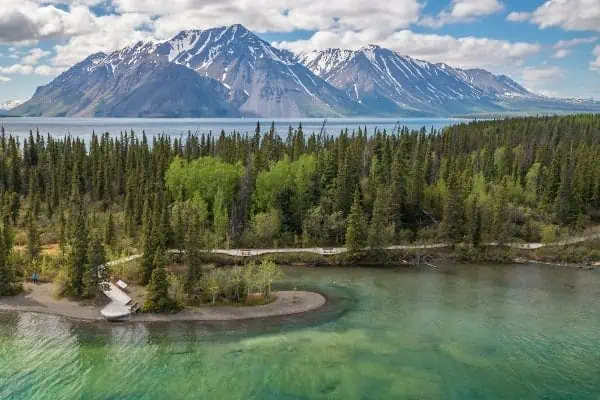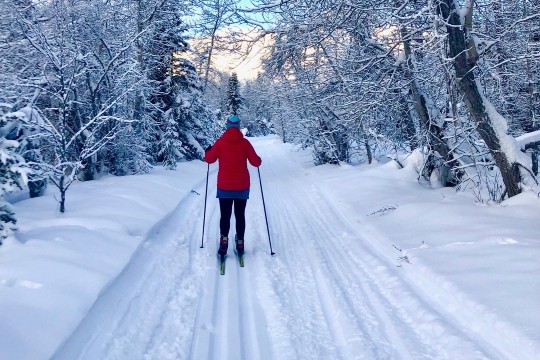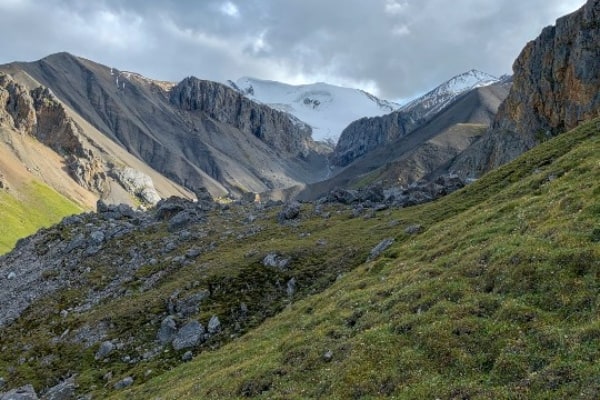David Neufeld strings a tarp between spruce trees. No tree in the right spot? He guys out his boat pole as a support.
He sets up his chair, then pulls his notebook and a reference text out of his dry-bag library.
Another day at the office.
Neufeld is a historian. He’s interested in place-centred history. He often reads and writes in the places where the histories he’s interested in happened. Understanding the forces of the place itself makes any written documents of events there much clearer.
It’s also important to Neufeld to question the “agency” in any given history; to ask who and what is allowed to be an active player. He critiques the role of the nation state in these terms; Canada’s treatment of First Nations people, for example.
But he also thinks the landscape needs to be given its fair role in the story.
“It’s a player, not just a passive field for human action.” Respect for the agency of people or rivers seems to be an important value within Neufeld’s thinking.
Neufeld works for Parks Canada as its Yukon and Western Arctic Historian. He’s employed by the Parks Canada Service Centre in Winnipeg but lives and works in Whitehorse.
Neufeld is a public historian. As such he “engages the public in the consideration of their pasts.” A public historian, he explains, “presents debate or discussion, or takes part in some grand objective.”
Neufeld relates that Parks Canada’s grand objective is to “fashion Canadian pride, to create a sense of national identity and to act as a platform for Canadians to tell their stories.”
In the last three decades, with growing interest in a policy of cultural plurality, Parks Canada was wondering, “How do we get First Nations to use Parks Canada?”
Ask them, said Neufeld. So he did, and continues to do so. As a steward of national story, he believes, Parks Canada should be including their perspectives.
For Neufeld, the river is a “cultured landscape.” I had the privilege of making a Yukon River trip with him in late July. I heard some of the layers of stories and changes the river has been through, which might be invisible to the naked eye, or the unstoried ear.
Landscapes can themselves be important historic sites.
“For white people, historic sites look like houses and churches,” says Neufeld. But most First Nations didn’t build that way. Landscapes like the site of the Tr’ochëk fish camp near Dawson carry their stories instead.
When I first paddled down the Yukon in 2002, I had the silly notion that I was passing through an untouched wilderness. But the area had been completely logged years before, to feed the furnaces of the paddlewheelers that chugged their way between Whitehorse, Dawson and Mayo.
Each winter, teams of men went out with dynamite to blow up rocks to clear the way for the paddlewheelers. Untouched?
In 1948-49 Canada started dreaming of the hydroelectric wealth of all that water. Neufeld kept pointing out the proposed power dam sites along the river.
One plan involved damming the Yukon River where it merges with the Teslin. River flow would be reversed down through Lake Laberge. Pump stations along the way would lift the water, which would run out through the Chilkoot Trail.
Dyea, empty at that time, could become an aluminum processing plant.
This would have flooded downtown Whitehorse. The town would have moved to the level of the airport, where Hillcrest now stands. Many people at the time were actually keen on the idea, as it would get them such modern conveniences as flush toilets in new houses.
These were some of the tales Neufeld spun as we travelled the river in his motorized wooden boat, manufactured in a factory near Haines Junction. Neufeld acquired it in 1998 when he and his family reached an age to appreciate more creature comforts.
He says his boat is “lovingly though sometimes ineptly taken care of.”
His boat pole was a young jack pine, cut green, debarked, smoothed and allowed to age. Neufeld spent a year as a visiting fellow at the Scott Polar Research Institute at Cambridge. While there he learned some punting techniques which he finds useful in his river boat.
“That was the most practical thing I learned at Cambridge,” he jokes.
Actually, Neufeld learned a lot at Cambridge about the history of Western science and how to critique it as a culturally specific way of knowing. But as a place-centred historian, he leaps with ease from the big picture story to the practical details of how to get there.
I have never seen anyone set up tarps with such artful glee. [See “Neufeld rope lock” diagram.”]
After years of busting out corner grommets on tarps, Neufeld devised this elegant technique to spread the stress along the tarp’s edge in a way that’s easy to use and easy to remove.
The rain may have its agency, but Neufeld has a tarp.
As he begins work on a new book about the histories of the Yukon River, he sits beside its waters and listens.




